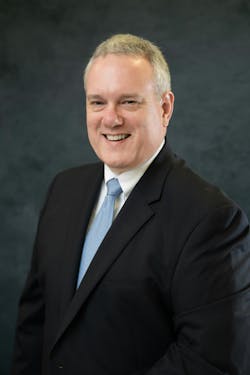From Roman Arches to AI
By Jon Straw
The construction industry blends old with new. From ancient Roman archways and aqueducts and 2,000-year-old theories of fluid mechanics by Archimedes through the invention of modern Portland cement just over 200 years ago to the survey or other technologies of today, the construction industry has endured.
With each iteration, designs and methodologies have improved. The constant – humans using, innovating and adapting the design and methods for humanity.
Artificial Intelligence (AI) is no different than any other tool used, innovated and adapted for the sake of humanity’s survival and growth. The transportation construction industry is already using AI to: simulate design variations for more efficient material usage and longevity of the finished work, collect and synthesize vast amounts of progress and quality-control data, and help decision-makers with planning and budgeting for projects based upon the transportation system users – humans.
The law defines AI as “a machine-based system that can, for a given set of human-defined objectives, make predictions, recommendations or decisions influencing real or virtual environments." (15 U.S. Code § 9401(3)).
AI "systems use machine and human-based inputs to: (A) perceive real and virtual environments; (B) abstract such perceptions into models through analysis in an automated manner; and (C) use model inference to formulate options for information or action.” (15 U.S. Code § 9401(3)).
In many ways, AI is much like the legal world. It could be said that the legal world is a system that uses factual inputs to perceive an environment forming the basis for legal opinions. Such opinions (cases) serve as models to formulate options for future information or action. In other words, by learning from the choices of others that led to the legal opinions, others should or should not do similar things to encourage or avoid potential outcomes.
This is much the same way that contractors adjust estimates for the latest bid based upon the parameters of the bid package and prior similar projects. Similarly, owners and project planners should naturally prepare better for the next project having the experience of the prior projects.
In 2024, the term Artificial Intelligence made its first-ever appearance in an opinion of the U.S. Supreme Court. Justice Alito, in a concurring opinion, explained that "artificial intelligence [is] a machine learning tool that arranges, deletes, and modifies content and learns from its own choices." Moody v. NetChoice, LLC, 603 U.S. 707, 770 (2024).
In the same opinion, Justice Alito also wrote that “when AI algorithms make a decision, ‘even the researchers and programmers creating them don't really understand why the models they have built make the decisions they make.’” (Id., quoting an article entitled AI Makes Decisions We Don’t Understand—That’s a Problem, by T. Xu (July 19, 2021)).
As with any endeavor, the risks are inherent. What can be done to mitigate the risks? First, focus. Just like the iterative design process, take small steps. Focus on specific tasks for specific projects where exploration can be done with less risk.
Second, plan. Like safety protocols, have a plan for implementation, train personnel on the plan, follow the plan, and improve the plan if necessary. The plan can empower action with a level of risk acceptable to the situation. (Note: mitigation is not necessarily eliminating risk, it can be balancing risk with benefit.)
Third, trust but verify. Trust a good plan by implementation, confirming and understanding results, and adjusting as needed. Even with AI, there will never be a substitute for human oversight.
We are not strangers to verification testing (e.g., core samples, compaction testing, pull tests, and the like). It is better to learn now than later.
(This is not an exhaustive list, but a good starting point.)
Construction is an amalgamation of historical innovation. The tried-and-true designs and methods of the past mixed with innovation of the present and future all of which is for and balanced by humanity. RB
Jon Straw is a partner with Kraftson Caudle, PLC, a law firm in McLean, Va., specializing in heavy-highway and transportation construction. Straw can be contacted via email at [email protected].
